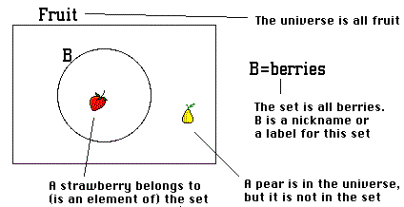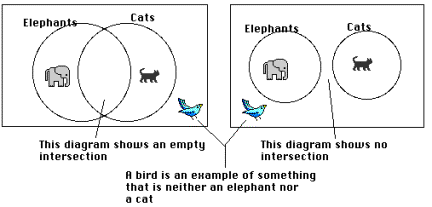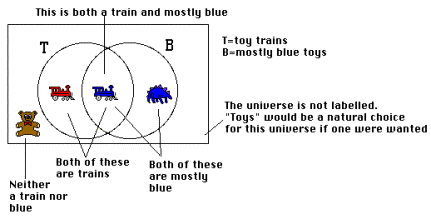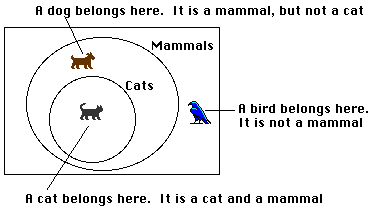
A set is a collection of elements. The elements can be anything you want: numbers, colors, words, animals, the contents of your kitchen drawer, anything! (You call the particular sorts of everything that you are working with is called your universe--it's like a really big uber-set. Sometimes you go to the trouble of telling what is in your universe and sometimes you don't--it's not mandatory). A set is the particular collection of elements (in your universe) that you are putting together. The only requirement here is that a set must be well defined. That means that you have to be able to say, without ambiguity, what is and what is not in the set. There are some pretty famous paradoxes people came up with before everyone agreed that you're not allowed to do things that are not well defined. When you draw a Venn diagram for a set, you often give it a short nickname, but somewhere on your page you should have the best, most unambiguous definition you can, of what the set is:

Once you have a set, you can compare it to other sets. Sets can be disjoint, which means that they don't overlap. Sometimes, we say that their intersection is empty. The set of all elephants, and the set of all cats are disjoint, because a cat is never an elephant (and vice versa). My picture shows pictures of elephants and cats, but the sets I am thinking of is the set of all of the real, alive elephants in the world, and the set of all real, alive cats in the world. I can choose that as my set to think about, even though I couldn't physically collect them together in the same place.

Sets can also intersect, which means they have a non-empty intersection. If I take as my sets: the set of all toy trains, and the set of all mostly-blue toys, then the intersection is the elements that belong in both sets--the set of blue toy trains. Notice that I didn't get to pick what the intersection was; the intersection is always all of the things that belong in both sets. Blue toy trains are toy trains so they fit in the first set, and blue toy trains are (mostly) blue toys, so they belong in the second set.

You can also have one set be a subset of the other--that means that one set is so large that it includes everything that is in the other set. The set of cats is a subset of the set of all mamals--all cats are mamals, so "cats" is a subset.
